Stop Building Walls: 3 Smart Curtain Divider Projects & How to Do Them
Introduction
Walls are permanent. Life isn’t.
If you reside in a studio apartment, share a living space with a partner, or simply require a quiet corner to do your work from home, you’ve most likely encountered this problem: how do you carve out privacy without calling in a contractor? Room divider curtains are the answer to that problem. They’re adaptable, renter-friendly, and surprisingly stylish: the kind of solution that adapts as your life does.
But here’s the catch: most of the available guides out there either overload you with technical terms related to the installation or suggest one product as the only solution. This is not that kind of guide. Consider this as your project manual. We will walk through three different scenarios: turning a studio into a true bedroom, making a work-from-home corner, and reimagining creative spaces, and demonstrate to you the exact methods of accomplishing them by using the appropriate hardware and fabric.
After going through this guide, you will not only know what to buy but also the reasons behind it and how to make your space look bigger, lighter, and more personal.
Project 1: The “Studio Bedroom” Solution

The Goal
To manage the one-room studio space in such a way that a private bedroom with its own characteristics will emerge from it. The latter being sufficiently dark and quiet for sleeping as well as styled to give an impression of conscious design.
The Challenge You’ll Face
● Light leakage: Quite often, regular curtains allow some bits of light to come in through the top or sides.
● Noise. No curtain is fully soundproof, but the wrong fabric won’t help at all.
● Weight and stability. If a rod is weak and short, it won’t support a heavy curtain, and sagging fabric only ruins the visual effect.
The Solution
Hardware: The ceiling track system is the best option for this project. It is attached closely to the ceiling, and hence, there are no gaps through which light can sneak through. It’s also built to carry the weight of heavier fabrics without bending or sagging. If you’re a homeowner or a renter with permission to drill, this is the most secure and professional-looking option.
Curtain Fabric: To achieve absolute privacy, you may need more than a decorative panel.
● Choose a blackout curtain to (as the name suggests) block out light completely.
● For added sound dampening/noise reduction, opt for velvet or a curtain with a thick liner. These heavier fabrics absorb more noise and create a cocoon-like feel.
Pro Tip: To make the curtain feel like a real wall, extend the track a few inches past the “bedroom zone” on each side. The overlap prevents light from leaking through.
Internal Resources to Explore
● Read our Blackout Curtain Guide to understand how blackout fabrics work and why they’re essential for sleep.
● Read through our Bedroom Curtain Guide for styling ideas that make your new “bedroom” feel like a sanctuary.
Project 2: The “Work‑From‑Home” Nook

The Goal
To establish a small office corner in your living room or bedroom. The aim here is to create a visual separation which helps you focus during the day and “switch off” at night
The Challenge You’ll Face
● Privacy without darkness. Obviously, you have to block off the view of your desk, but still, you don’t want to lose all the natural light.
● Renter restrictions. Drilling into the ceiling is not allowed in most apartments.
● Flexibility. The divider should be easy to install, remove, or adjust as your needs change.
The Solution
Hardware: Here, the heavy‑duty tension rod is the best option. It can be fixed between two walls without screws or brackets, thus making it completely renter‑friendly. A high-quality rod is capable of handling heavier fabrics and wider spans than most people would think; consequently, there is no need to give up on style just for the sake of it.
Curtain Fabric: Since this is about light control rather than blocking out the light, choose fabrics that filter rather than block.
● Light-filtering curtains obscure the view and provide privacy while still permitting some daylight.
● Sheer curtains give a softer and more open feel. They will not hide everything, however; if you are only looking for a visual indication that says “this is my workplace,” then they are just right.
Pro Tip: In the event that your desk is facing a window, use a light-filtering curtain with a pale shade. It will minimize glare on your screen while ensuring the room stays bright.
Internal Resources to Explore
● Read our Light Filtering vs. Sheer Guide to help you decide the best fabric for you in terms of privacy and illumination.
Project 3: The “Creative Spaces” Inspiration Gallery
Not every curtain divider project is about privacy or work. Sometimes it’s about creativity, style, or solving those little everyday annoyances that walls can’t fix. Here are two innovative ways to use room divider curtains beyond the obvious.
Inspiration 1: The Walk‑In Closet Upgrade

The Problem: An open closet or attic entrance can make a room feel cluttered, no matter how neatly you fold your clothes. Doors cost a lot, and sliding panels frequently take up some valuable space.
The Solution: Install a simple ceiling track or lightweight tension rod and hang a linen or light-filtering curtain. It immediately conceals the clutter and brings a soft, boutique-like atmosphere to the room. Since fabric is a flexible material, you can open it when you need to get in and close it when you want a neat, polished look.
Pro Tip: Choose a curtain with a color that matches the walls of your room. This gives the idea of intentionality, rather than a quick cover-up job.
Inspiration 2: The Canopy Bed Effect
The Problem: You want the romantic and cozy look of a canopy bed, but you are reluctant to spend money on a new bed frame.
The Solution: Attach a square or circular ceiling track to the ceiling above your bed and hang sheer curtains on all sides. The fabric encloses the bed, which both adds to the style and the intimacy of the space. It is also a solution that is convenient to renters, as the track can be taken off without any change to the bed.
Pro Tip: Stick to lightweight sheers in white or soft neutrals. They will allow the light to pass through and maintain a light and airy look instead of making the room look heavy.
Why this matters: These creative uses of room divider curtains demonstrate that they don't have to just serve a functional purpose. They can also be design statements that upgrade your space, whether you're hiding clutter or creating atmosphere.
The “How‑To” Manual: Your Quick‑Start Guide
How to Measure for a Room Divider (It’s Not a Window)
When you are dividing a room, the measurements should be different from those used for curtains that are to be hung on a window.
● Width: Measure the whole area that you want to cover and not only the window frame. Also, make an allowance for the curtain panels to overlap and look full when closed.
● Height: The measurement should be taken from ceiling to floor. This will make sure that the curtain is hanging flush and there aren’t any gaps.
● Standard Sizes: The height measurement will indicate whether you need 96-inch or 108-inch curtains. [Learn more about these standard sizes in our Size Guide].
Pro Tip: It is always better to round your measurements up. Slightly longer curtains can puddle beautifully, but those that are too short will give an unfinished look.
Hardware Recap: Track vs. Tension Rod (The 60‑Second Cheat Sheet)
|
Hardware Type |
Best For |
Pros |
Cons |
|
Ceiling Track |
Permanent or semi‑permanent projects (studio bedrooms, canopy beds) |
Flush to ceiling, blocks light, supports heavy fabrics, and has a professional look |
Requires drilling, less renter-friendly |
|
Heavy‑Duty Tension Rod |
Renter‑friendly projects (WFH nooks, temporary dividers) |
No drilling, easy to install/remove, flexible placement |
Limited weight capacity, and may not span very wide areas |
In short: First, determine the full span and ceiling height, then decide on the hardware based on your project. Ceiling tracks are good for heavy, permanent solutions, while tension rods are great for light work and those who are renting
Conclusion: Your Space, Your Rules
Curtains are more than just fabric. They are one of the most versatile, cost-effective, and stylish means of defining a space without the need for building walls. Room divider curtains are not limited to one layout; they are rather adaptable to your lifestyle. Whether you are transforming a studio into a real bedroom, creating a work-from-home nook, or simply adding some creative touches such as a closet cover or canopy bed, these curtains are there for you.
Next Steps
The home you live in should be of help to you, not the other way round. First of all, find out what problem you want to solve (privacy, light control, or just style), and after that, choose the right hardware and fabric for it.
With the right curtain divider from threegirls, you can reshape your space in a single afternoon. No walls, no stress!
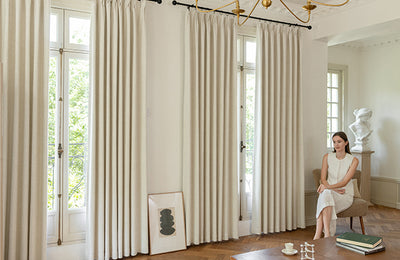
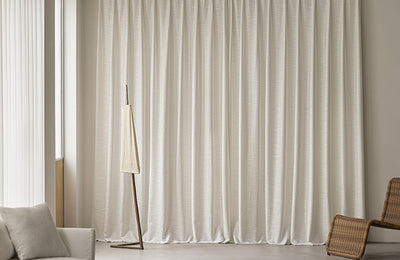
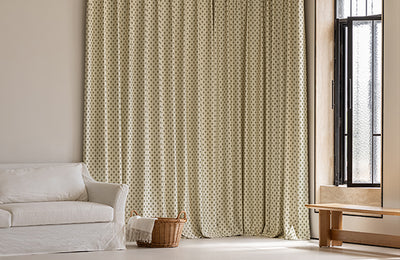




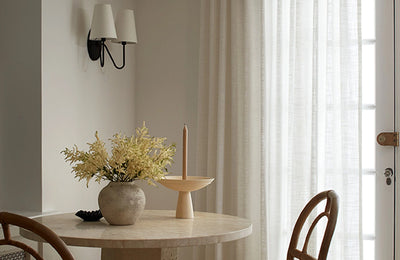
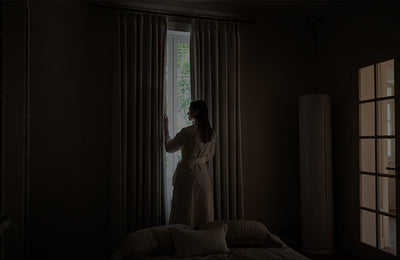



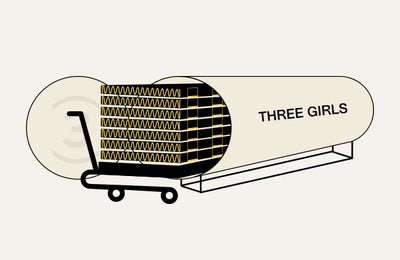



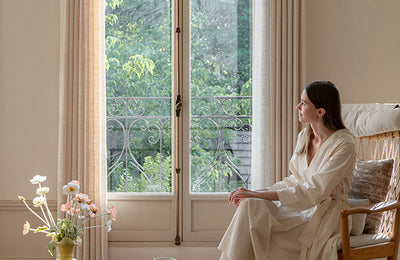







Leave a comment
All comments are moderated before being published.